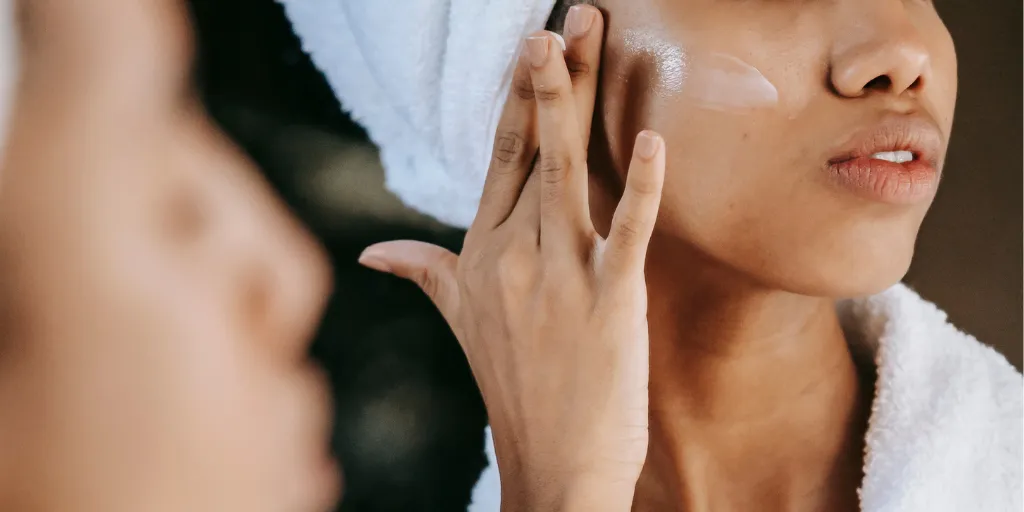
Aging, Fine Lines & Skin Rejuvenation
Let’s be honest—aging is inevitable, but looking tired doesn’t have to be part of the deal. You ever glance in the mirror and think, “When did that line get there?” Yep, same. Whether it’s the fine lines near your eyes or that stubborn wrinkle that showed up uninvited, aging signs tend to sneak in and stay.
But here’s the silver lining: modern skincare is smarter, more effective, and more accessible than ever before. You don’t have to resign yourself to watching your skin lose its spark. Instead, with the right blend of knowledge, treatments, and lifestyle choices, you can rewind the clock—or at least make it slow down.
This guide walks you through the most effective, science-backed ways to reduce fine lines, restore your glow, and help your skin age like fine wine. We’ll explore innovative treatments like Microneedling, the collagen booster that keeps your skin smooth, LED Light Therapy, your at-home spa-grade anti-aging solution, and Anti-Aging Facials vs. Chemical Peels, where we break down what actually works. These aren’t fads—they’re part of a growing toolkit that helps beauty enthusiasts (like you) feel confident at every age.
Before diving into treatments, let’s break down the basics. Because if you don’t understand what’s happening under the surface, you won’t know what solution actually fits your skin’s needs.
So what really causes aging skin?
It’s not just birthdays. Aging skin is a mix of:
Loss of collagen & elastin: Think of collagen as your skin's scaffolding. As production decreases with age, skin becomes thinner and more prone to sagging.
Sun damage (photoaging): UV rays are like silent assassins, slowly degrading your skin's support system and speeding up wrinkle formation.
Lifestyle habits: Poor sleep, high stress, smoking, and a high-sugar diet lead to oxidative stress, making skin dull and less resilient.
Slower cell turnover: Younger skin sheds and renews quickly. As we age, dead skin cells linger longer, creating a rougher texture.
Here’s a quick cheat sheet to help you visualize what’s going on
What Happens to Skin and How to Fight It
Your skin changes due to age, environment, and stress. But each issue has a targeted solution. Here’s a quick breakdown of common skin concerns and the treatments that actually work
SPF, antioxidants (like Vitamin C), LED light therapy, Microneedling, retinoids, peptides, Gentle exfoliation, chemical peels
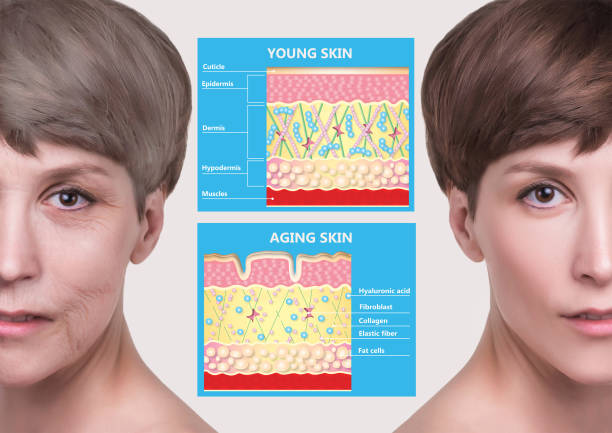
Aging doesn’t happen overnight—and that means it’s something you can address gradually with consistency and the right strategies.
Fine lines are often mistaken for deeper wrinkles, but they’re actually very different. They are the subtle creases that usually appear first and often become more noticeable after age 30.
They typically show up in these areas:
Crow’s feet: the small lines that radiate from the outer corners of your eyes (especially after years of squinting or laughing)
Smile lines: around the mouth, caused by repeated facial movements
Forehead creases: those pesky horizontal lines that form from raising your eyebrows
Here’s the thing: Fine lines are your skin’s early warning signs. And if you pay attention to them early, you can dramatically slow down their progression.
Stage Signs Best Treatment
The key to prevention and treatment is early intervention. That’s where treatments like Microneedling and LED Light Therapy come in strong.
If you're still unsure whether those tiny creases around your eyes count as "fine lines," try this quick test: smile in the mirror. Do you see soft lines that disappear when your face relaxes? If yes, you’re in the early stage—and it’s the perfect time to act. These are the moments where topical treatments, light therapy, and microneedling offer the most visible improvements without the need for more aggressive measures. Prevention is always better than correction.
"Skin rejuvenation" is more than a beauty buzzword. It’s a science-backed process of helping your skin function and look more like it did in your 20s. That means increasing elasticity, smoothing out fine lines, fading dark spots, and bringing back that lit-from-within glow.
Key benefits of true rejuvenation include:
Boosted collagen production
Improved blood circulation
Reduction in pigmentation and dullness
Hydration and plumpness restored
Smoother texture and tone
Rejuvenation treatments don’t just help you look better; they help your skin behave younger. Think of your skin cells like sleepy workers—they need a wake-up call. Rejuvenating treatments like microneedling and LED Light Therapy act as that nudge, prompting your cells to produce more collagen and elastin, the critical proteins responsible for firm, supple skin.
Methods to consider:
In-office procedures like microneedling, chemical peels, and light therapy for targeted, visible results
Daily skincare routines incorporating retinoids, peptides, and hyaluronic acid
Lifestyle changes that include hydration, sleep hygiene, stress management, and antioxidant-rich diets

Think of how your skin feels after a weekend wellness retreat: rested, nourished, glowing. Rejuvenation, when done right, gives you that feeling—on repeat. With the right treatments, your skin isn’t just treated; it’s transformed.
Microneedling: Boost Collagen & Smooth Wrinkles
Microneedling might sound intense, but it’s one of the most effective and surprisingly gentle treatments out there for aging skin. Also called collagen induction therapy, microneedling works by creating thousands of tiny micro-injuries in the skin, which stimulates your body’s natural healing response. This process revs up collagen and elastin production—two proteins your skin relies on for firmness, smoothness, and bounce.
Why it works:
Those micro-injuries aren’t damaging; they’re controlled and precise.
Your skin treats them like a minor wound, so it kicks healing into high gear.
The result? Tighter skin, reduced wrinkles, and improved texture over time.
Benefits of microneedling for aging skin:
Visibly reduces fine lines and crow’s feet
Smooths out acne scars and texture irregularities
Enhances absorption of skincare products post-treatment
Stimulates collagen for long-term rejuvenation
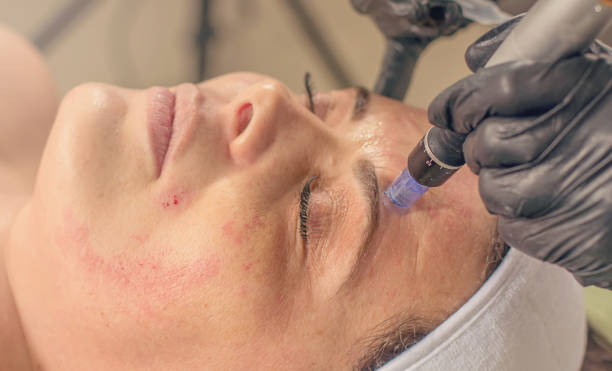
Allexxandar via Pexels
If you’re starting to notice that your foundation settles into lines or your skin doesn’t have that youthful snap, microneedling could be your game-changer.
Let’s talk about one of the most futuristic and relaxing anti-aging treatments out there—LED Light Therapy. If you’ve seen celebrities lounging in those glowing full-face masks that make them look like they’re auditioning for a sci-fi movie, you’ve seen LED in action. But this treatment isn’t just for red carpet prep—it’s backed by real science and trusted by dermatologists worldwide.
What is LED Light Therapy?
LED (Light Emitting Diode) therapy uses varying wavelengths of light to penetrate the skin and trigger natural processes that help repair, rejuvenate, and protect. Red light, in particular, is used to reduce inflammation and stimulate collagen and elastin—the holy grail proteins for plump, youthful skin.
Why it works for aging skin:
Red light penetrates deep into the dermis, energizing skin cells
It boosts ATP (adenosine triphosphate), a molecule that fuels cell repair and turnover
Reduces inflammation and oxidative stress that contribute to aging
LED Color Function Best For
Red Light Stimulates collagen, improves circulation Fine lines, wrinkles, dullness
Blue Light Kills acne-causing bacteria Acne-prone or congested skin
Green Light Targets pigmentation and redness Uneven tone, rosacea
Yellow Light Reduces inflammation and swelling Sensitive skin
Benefits of LED Light Therapy:
Reduces appearance of fine lines and crow’s feet
Improves skin tone, elasticity, and firmness
Boosts hydration and overall glow
Helps calm redness and irritation, making it safe for sensitive skin
Non-invasive and completely painless
What makes LED unique is that you can use it at home with high-quality masks or panels—or go in-clinic for professional-strength sessions. The key is consistency. Think of it like going to the gym for your skin. The more you commit, the more noticeable the results you will see.
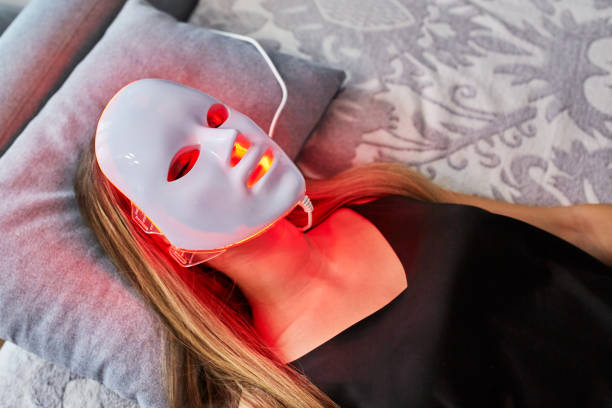
Andrei Orlov via Pixabay
Let’s face it—sometimes your skin just feels… tired. Like it needs a reboot. That’s where anti-aging facials and chemical peels come in. They’re both powerful tools in the skin rejuvenation world, but they work differently—and choosing the right one can make all the difference in your glow-up journey.
What’s the core difference?
Facials focus on hydration, relaxation, and maintenance. Peels are more about exfoliation, deep renewal, and targeting specific issues like pigmentation or texture.
Let’s break it down:
Anti-Aging Facials:
Great for ongoing maintenance and glow
Often include massage, steam, masks, and antioxidant-infused serums
Perfect before events or when skin feels dehydrated or dull
Chemical Peels:
Use acids (like glycolic, lactic, or TCA) to dissolve dead skin cells
Stimulate cell turnover and collagen production
Target deeper issues like age spots, fine lines, and uneven tone
Choose a facial if:
Your skin is dry, sensitive, or in need of hydration
You want a relaxing, zero-downtime treatment
You’re looking for maintenance or prepping for an event
Choose a chemical peel if:
You want faster results targeting aging or hyperpigmentation
Your skin feels rough or looks uneven
You’re okay with a little downtime for bigger gains
Facial & Peel Quick Comparison
Facials = gentle refreshers; great for upkeep
Peels = serious exfoliators; great for correction
Think of facials as your monthly reset and peels as your quarterly power clean.
Want more help choosing? Dive into the full comparison: Anti-Aging Facials vs. Chemical Peels
Skincare products and treatments get all the spotlight—but behind the scenes, lifestyle choices are the real MVPs of youthful skin. You can use the most luxurious creams and book every anti-aging treatment available, but if your sleep is a mess, you're chronically stressed, and you snack on processed foods all day, your skin is going to spill the tea.
Here’s how your everyday habits shape your skin’s future:
1. Sleep: Your Skin’s Repair Time
When you sleep, your body goes into recovery mode—and your skin isn’t just lounging around. It’s rebuilding collagen, repairing damage, and flushing out toxins. Skimping on sleep means skipping out on repair time, leading to dullness, under-eye bags, and faster aging.
2. Stress: The Silent Skin Agitator
Stress increases cortisol levels, which can lead to inflammation, breakouts, and collagen breakdown. Ever noticed your skin looking worse during finals week or a big project? That’s not coincidence—it’s cortisol.
3. Hydration: More Than Just Water
Water plumps the skin, supports detox, and helps maintain elasticity. Dehydrated skin often looks more wrinkled and flaky than it actually is.
4. Diet: Beauty Begins in the Kitchen
Antioxidants, omega-3 fatty acids, vitamins A, C, and E—all play huge roles in skin health. Think berries, leafy greens, fatty fish, and nuts.
5. Movement: Boost Blood Flow, Boost Glow
Exercise improves circulation, bringing oxygen and nutrients to your skin. It also reduces stress and promotes better sleep. Win-win.
When it comes to aging gracefully, your daily skincare routine is your front line. But let’s be real: between TikTok trends and skincare influencers, it’s easy to feel like you need a chemistry degree just to wash your face. Truth is, you only need a few great steps done consistently—not 12 confusing layers.
Let’s simplify anti-aging skincare into a powerful yet doable routine.
Morning Routine (AM)
Gentle Cleanser – Start with something that won’t strip your skin. Avoid anything with sulfates. Think of it like coffee: it should wake up your face, not shock it.
Antioxidant Serum (Vitamin C) – This fights free radicals from pollution and UV rays, while also brightening dullness.
Moisturizer – Keeps your skin barrier happy and locks in hydration.
SPF 50 – Non-negotiable. Sun damage is the #1 cause of premature aging. Look for a broad-spectrum sunscreen.
Evening Routine (PM)
Cleanser – Remove makeup, dirt, and pollution from the day.
Treatment Serum (Retinol or Peptides) – These ingredients help with collagen renewal and fine line reduction. Start slowly (every other night) if you’re new to them.
Moisturizer – Replenish moisture lost during the day and seal in actives.
Eye Cream (Optional) – Use one with caffeine or hyaluronic acid if you deal with puffiness or dryness around the eyes.
Weekly Add-Ons
Exfoliation (1–2x/week): Use a gentle AHA/BHA exfoliant to encourage cell turnover.
Hydrating Masks: Great for plumping up tired, dehydrated skin.
LED Therapy at Home: If you’ve invested in a device, plug it into your routine 2–3 times a week for extra glow.
Consistency beats complexity. A solid 5-minute skincare routine every day will outperform a 10-step routine done once a week.
Let’s talk dollars and cents—because as much as we love the idea of glowing skin, our wallets have a say in it too. The good news is that skin rejuvenation doesn’t have to cost a fortune. With so many options now available—both in-office and at home—there’s a path for every budget.
Whether you're planning your first professional facial or investing in your own LED mask, it helps to understand what kind of return you can expect on your investment (ROI, but make it skincare).
Splurge vs. Save
Skincare Budgeting Tips:
Bundle treatments: Many clinics offer packages at discounted rates if you commit to multiple sessions upfront.
Look for new patient specials: First-time client discounts can save you hundreds.
Mix and match: Alternate between professional treatments and at-home care. For example, follow a monthly in-office facial with weekly at-home LED therapy.
Track your spending: Allocate a monthly skincare budget just like you would with groceries or fitness.
And remember—great skin is a long game. Spending $150/month consistently often yields better results than a single $1,000 splurge once a year. Think investment, not impulse.
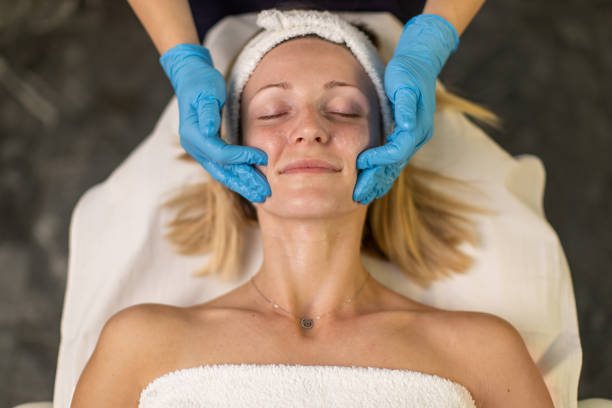
Here's the big question we all eventually ask: "When should I actually start using anti-aging products or treatments?" The truth is, anti-aging isn’t just for people in their 40s or 50s. In fact, the best time to start is before you think you need it.
Think of skincare like investing. The earlier you start, the more long-term gains you'll see. Using sunscreen in your 20s, a retinol by your 30s, and exploring treatments like microneedling or LED light therapy in your 30s–40s can actually prevent the need for more invasive procedures later.
Not Too Early, Never Too Late
While prevention is best, it’s never too late to start caring for your skin. Even in your 50s or 60s, treatments like chemical peels and LED therapy can visibly improve skin tone, texture, and elasticity. The body still produces collagen—it just needs the right encouragement.
Quick Self-Check: Should You Start Now?
Ask yourself:
Do you see fine lines forming?
Does your skin look dull or feel rough?
Are you exposed to a lot of sun or pollution?
Are you over 30?
If you answered yes to any of the above, you’re in the prime zone to start.
Aging may be natural, but dull, lifeless skin doesn’t have to be part of your story. Whether you're chasing that post-vacation glow or just trying to outsmart your mirror's harsh lighting, one thing is clear: you’ve got options—and the power to choose.
You don’t need a celebrity budget or a drawer full of luxury serums. You just need a plan, some consistency, and a little help from proven science-backed treatments like:
Anti-Aging Facials vs. Chemical Peels
Everyone’s skin journey is different. Some may prefer the at-home ease of LED masks, while others love the ritual of monthly facials. The best approach? Do what fits your lifestyle, your skin goals, and your budget.
Here’s your takeaway:
Start early if you can. But start today, regardless.
Protect your skin with SPF. It’s the unsung hero of anti-aging.
Be consistent. Even the best serum won’t work if it stays in the bottle.
Treat your skin with intention—not panic.
And when in doubt, consult a licensed esthetician or dermatologist to create a customized routine. You’re not in this alone.
Because the goal isn’t to erase your years—it’s to wear them beautifully.
So go ahead—glow up on your own terms.
References for this Information:
American Academy of Dermatology. (n.d.). How to reduce premature skin aging. Retrieved from https://www.aad.org/public/everyday-care/skin-care-secrets/anti-aging
Cleveland Clinic. (n.d.). Microneedling. Retrieved from https://my.clevelandclinic.org/health/treatments/21563-microneedling
Mayo Clinic. (n.d.). Wrinkles: Causes and treatment. Retrieved from https://www.mayoclinic.org/diseases-conditions/wrinkles/symptoms-causes/syc-20354927
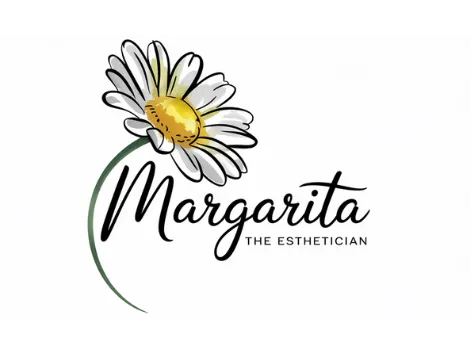

Comments
0 comments